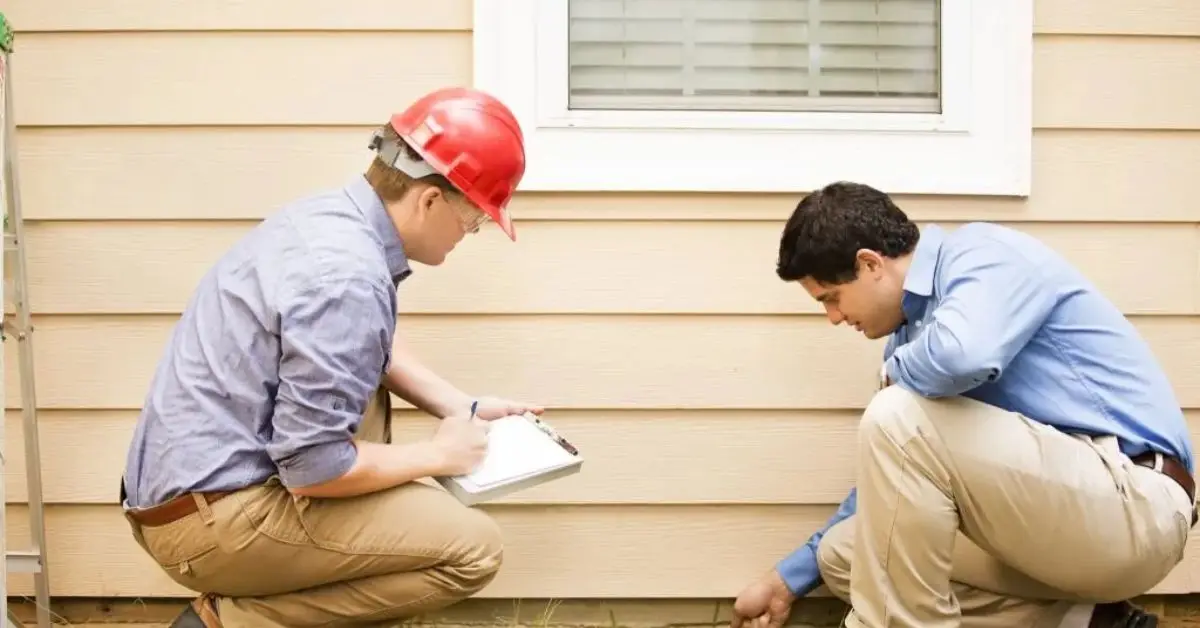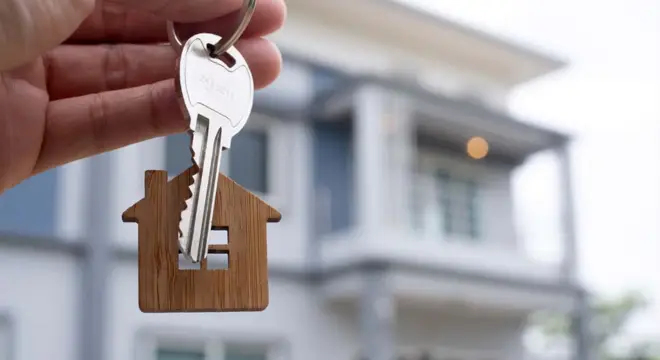10 Simple Steps to Buying a House in 2025 as a First-Time Buyer
Let me be honest with you — buying your first home can feel overwhelming. You’re excited, probably nervous, and maybe wondering: “Am I even ready for this?”
I get it. I’ve worked with enough first-time buyers to know the emotional rollercoaster. One day you’re scrolling listings thinking, “This is the one!” and the next, you’re deep into mortgage terms you’ve never heard before.
But here’s the truth most guides don’t tell you: buying a house isn’t just a checklist — it’s a mindset shift. You’re not just picking four walls and a roof. You’re making one of the biggest financial and emotional decisions of your life.
That’s why this guide isn’t a recycled list of steps you’ve already Googled. I’ve broken down the process into 10 real-world steps, rooted in what actually happens in 2025 — from mortgage rate shifts to bidding wars, credit traps, and emotional burnout.
No fluff. No sales pitch. Just what you need to know — and how to move forward with confidence.
Step 1: Assess Your Financial Readiness
Just because a lender says you’re “pre-approved” doesn’t mean you can actually afford that home. That’s one of the most common—and costly—mistakes I see first-time buyers make.
Before you start touring houses or scrolling listings, ask yourself a harder question:
Can I truly afford this, not just in theory, but in real life?
Start with your savings.
Buying a home isn’t just about the down payment. There are closing costs, inspections, moving expenses, and the unexpected—like needing to replace an aging furnace or pay for a new roof.
The smart move is to make sure you still have at least 3 to 6 months of living expenses saved after you close. If buying wipes out your emergency fund, you’re taking on more risk than you need to.
Check your debt.
Student loans, credit card balances, car payments—it all impacts your financial breathing room. Lenders look at your debt-to-income ratio (DTI) to calculate risk. Most want to see it below 43%, but if you can keep it under 36%, you’ll feel the difference month to month.
And don’t ignore your credit score. A score of 700+ gives you access to better interest rates, but even if you’re in the 640–680 range, there are still first-time homebuyer programs that can help. If your credit needs work, it’s worth taking a few months to pay down balances and fix any reporting errors. You can pull your reports free every week at AnnualCreditReport.com—and yes, that’s a legit federal site.
Ask yourself the harder questions.
Can you handle a higher utility bill? Are you ready to stay in one place for at least 3–5 years? What if property taxes go up?
Buying before you’re truly ready doesn’t just cause stress—it can trap you financially. On the other hand, when your money is solid, the process becomes a lot more empowering.
Quick recap:
- Do you have savings left after the purchase?
- Is your debt under control?
- Is your credit score solid or improving?
- Are you thinking long-term?
If you’re mostly checking those boxes, you’re probably more ready than you think. And if not? That’s okay. It’s better to wait a little than to buy too soon and regret it. Still not sure if you’re mentally and financially ready to buy? These 7 questions every first-time buyer should ask will help you pause, reflect, and avoid costly regret later.
Step 2: Set a Realistic Budget and Save Without Stress
It’s tempting to base your budget on whatever the bank pre-approves you for. But that number often ignores the full picture of homeownership — property taxes, insurance, closing costs, maintenance, and more.

To avoid getting house-poor, aim to keep your total monthly housing costs under 28–30% of your gross income. And don’t forget: beyond the down payment, you’ll also need 2–5% of the home price in closing costs, plus money for emergencies, furniture, and basic repairs.
Use it to gut-check your assumptions and make sure your savings plan actually covers the real costs.
Step 3: Get Mortgage Pre-Approval and Compare Loan Types
Once you’ve nailed down your budget, your next move is getting pre-approved for a mortgage — not just pre-qualified. Pre-approval is more official, showing sellers you’re serious and giving you a clearer price range.
But don’t stop with one lender. Rates, fees, and flexibility vary, sometimes more than you’d expect. You might save thousands over the life of a loan just by comparing three offers.
Also, dig into which loan type fits your situation best — conventional, FHA, VA, or USDA. Each comes with different credit, income, and down payment requirements.
If this part feels overwhelming, The Mortgage Reports has a clear comparison guide for first-time buyers that breaks down all the major loan types in simple terms.
Bookmark that one — it’s genuinely helpful before you start applying.
Step 4: Build Your Home-Buying Team
Buying a house isn’t a solo mission. You need the right people in your corner — especially as a first-time buyer.
Start with a buyer’s agent who knows your local market and advocates for your interests, not the seller’s. A good agent helps you avoid overpaying, navigate inspections, and negotiate better terms.

You’ll also want a reliable mortgage broker or lender, a licensed home inspector, and possibly a real estate attorney (especially in states where they’re required at closing).
Your team isn’t just paperwork support — they’ll help you avoid major headaches you don’t even see coming.
Step 5: House Hunt with Intention — Not Emotion
This is the part everyone romanticizes — open houses, Pinterest boards, weekend showings. And yes, it can be fun. But it’s also where most first-time buyers lose control of their budget and priorities.
Here’s what I tell every client: before you even start looking, write down three lists —
- Non-negotiables (location, commute time, school district)
- Strong preferences (yard, number of bathrooms, home office space)
- Wants (quartz counters, walk-in closets, big backyard)
If you don’t define this early, emotion will hijack your decisions. You’ll fall for granite countertops and forget you didn’t want to live 45 minutes from work.
Also, don’t rely only on Zillow or Redfin. Look in Facebook groups, talk to friends in the area, and ask your agent about pocket listings. Real insight doesn’t always show up on page one of search results.
If you’re considering older homes in your search, make sure you understand the hidden risks and renovation costs that can come with them — these must-know tips for buying an older home will help you spot red flags before it’s too late.
House hunting is strategic, not just aesthetic. Treat it like a serious search — not a mood board.
Step 6: Inspect, Appraise, and Protect Yourself
Once you find a house that fits, the real due diligence begins. Don’t let the excitement override your judgment here — this is where future nightmares either start or get avoided.

Always hire an independent, licensed home inspector, not someone recommended by the seller’s agent. You want brutal honesty, not politeness.
During the inspection, pay close attention to:
- Roof age
- HVAC and water heater condition
- Foundation issues or signs of water damage
- Plumbing and electrical systems
- Mold or pest signs (especially termites)
Don’t just rely on the inspector’s checklist — ask these 12 critical questions during your home inspection to make sure you’re catching the real issues that could cost you later.
The inspection may give you leverage to renegotiate — or a good reason to walk away.
After that comes the appraisal, which is required by your lender to confirm the home’s value matches the price. If the appraisal comes in low, you’ll either need to renegotiate or cover the gap out of pocket.
For a real-world checklist of what to look for and how to prepare, Time Magazine offers a solid guide to the inspection and appraisal process that’s worth reviewing.
You don’t get a second chance to do this right. Inspections are your protection, not just a formality.
Step 7: Make a Smart, Strategic Offer
Now comes the part where most buyers freeze — “How much should I offer?”
You want to be competitive, but not reckless. And your number should reflect what the home is actually worth, not just what you’re emotionally attached to.
Here’s how to think through it:
- Compare recent sales (your agent should help with this)
- Factor in days on market — a home sitting for 45+ days might be overpriced
- Decide what you’re comfortable offering if a bidding war happens
- Include smart contingencies: financing, inspection, and appraisal at minimum
- Prepare to offer earnest money — a deposit that shows you’re serious
If you’re in a hot market, you may be tempted to skip contingencies or bid over asking. Be careful. Sometimes walking away is cheaper than winning.
The right offer isn’t just about the price. It’s about the full package — and how confidently you can back it up.
Step 8: Navigate Underwriting and Prepare for Closing
Once your offer is accepted, it can feel like you’re almost done. But there’s still one big hurdle: mortgage underwriting. This is where your lender double-checks everything — income, assets, debt, credit — to make sure you actually qualify before giving you the money.

It’s detailed and slow for a reason. They’re taking a risk on you.
During this phase, don’t:
- Make large bank transfers
- Open new credit cards
- Change jobs or income sources
- Miss a bill payment
All of these can throw red flags and delay or even derail your closing.
Meanwhile, your lender will also finalize the loan estimate, send you the Closing Disclosure (you’ll need to review this carefully), and schedule the final closing date.
Right before closing, you’ll do a final walkthrough to make sure everything’s as agreed — any repairs are done, appliances are there, nothing has changed since inspection.
If you want a full picture of what happens between offer and closing, Bankrate’s mortgage process guide breaks it down without jargon — worth reading before you hit this phase.
Underwriting is paperwork-heavy and sometimes frustrating, but it’s your last major step before the keys are in your hand.
Step 9: Move In — and Handle the Essentials First
After closing, the house is finally yours — but don’t kick back just yet. The first 2–3 weeks after you move in are critical for setting things up the right way.
Here’s what you should handle immediately:
- Change all locks and garage codes
- Set up homeowners insurance and confirm it’s active
- Connect utilities (gas, electric, water, internet, trash)
- Register for local services — especially if you just moved cities or states
- Store your closing documents and warranty info somewhere safe
- Inspect again: check smoke detectors, plumbing, HVAC filter, etc.
This is also the time to start a maintenance routine — even if everything feels brand new. A yearly budget for repairs, seasonal checklists, and a running list of upgrades will protect your investment and your peace of mind.
Don’t underestimate this phase. Moving in is more than unpacking boxes — it’s about becoming the homeowner you’ve spent months preparing to be.
Step 10: Think Long-Term — Build Equity and Protect Your Investment
You bought the house — now what?
This is the part most guides skip entirely, but it matters just as much as the offer and inspection. Because owning a home doesn’t stop at move-in — it’s a long game. And the way you treat it from day one will shape whether it becomes a smart investment… or a slow financial leak.
Start by thinking in years, not months. Unless you bought with the intent to flip, plan to hold the home for at least 5–7 years. Why? Because selling earlier can wipe out your equity gains once you factor in agent fees, closing costs, and market shifts.
Also, think about home maintenance like insurance — regular care protects value. Replace filters, inspect gutters, seal cracks, service your systems. Preventing a $1500 problem is always cheaper than fixing a $15,000 one.
As your finances grow, consider paying down your mortgage faster — even one extra payment a year can knock years off your loan. And if interest rates drop later, explore refinancing. This is how equity builds — through smart, quiet decisions over time.
For a grounded take on post-purchase financial strategy, DFPI (California’s official finance department) offers practical tips to help homeowners stay stable long-term.
This phase is less about buying — and more about becoming. You’re not just a homeowner now. You’re the CEO of your financial future.
Bonus: 6 Common First-Time Buyer Mistakes to Avoid
Even with the best plan, mistakes happen. But many of them are preventable — and often come from rushing, guessing, or going with your gut when you should be pausing.
Here are some traps I’ve seen far too many smart buyers fall into:
- Stretching your budget because the lender “approved it”
- Skipping inspection to win a bidding war
- Ignoring resale value — buying for emotion, not location or quality
- Not understanding all costs beyond the mortgage
- Relying only on one lender without shopping for better rates
- Using savings to buy, with nothing left after closing
If you hit any of these, don’t panic — but learn from them. The real risk isn’t mistakes. It’s repeating them or pretending they’re not a big deal.
Mistakes in real estate are expensive. But awareness is free — and often the only thing standing between you and regret.
You’re in control now.
Whether you’re just starting or deep in the process, the fact that you’re reading this means you’re asking the right questions. Buying a home isn’t just about checking boxes — it’s about being prepared to own it in every sense.
What’s one thing you still feel unsure about in the process? Let’s tackle it — drop it in the comments or talk to someone who’s been there.
Final Checklist: 10 Simple Steps to Buying a House in 2025
Use this quick recap as a reality-check before you commit. Whether you’re midway or just starting, every step below matters.
- Check your credit + fix red flags
- Set a clear, realistic budget — including closing and move-in costs
- Get pre-approved + compare loan offers
- Build your A-team — agent, lender, inspector, etc.
- House hunt with non-negotiables — not emotions
- Get a full inspection + review appraisal results carefully
- Make a smart, data-backed offer with strong contingencies
- Stay calm during underwriting — no big purchases or job changes
- Close like a pro — review all docs + do a final walkthrough
- Maintain and grow your investment after move-in
If you check all these boxes, you’re not just ready to buy — you’re ready to own.
Let’s Make This Easier Together
Still feel stuck on one part of the process?
Wondering what step actually comes next in your situation?
Ask a question in the comments, or share this with someone who’s also house-hunting — because real decisions get easier when we stop pretending we have to figure it all out alone.
Want more real-world guides like this? Visit Build Like New for expert tips, smart homebuying strategies, and step-by-step breakdowns — made for first-time buyers like you.
Disclaimer: This article is for informational purposes only and does not constitute financial, legal, or real estate advice. Always consult with licensed professionals before making any major home-buying decisions.


